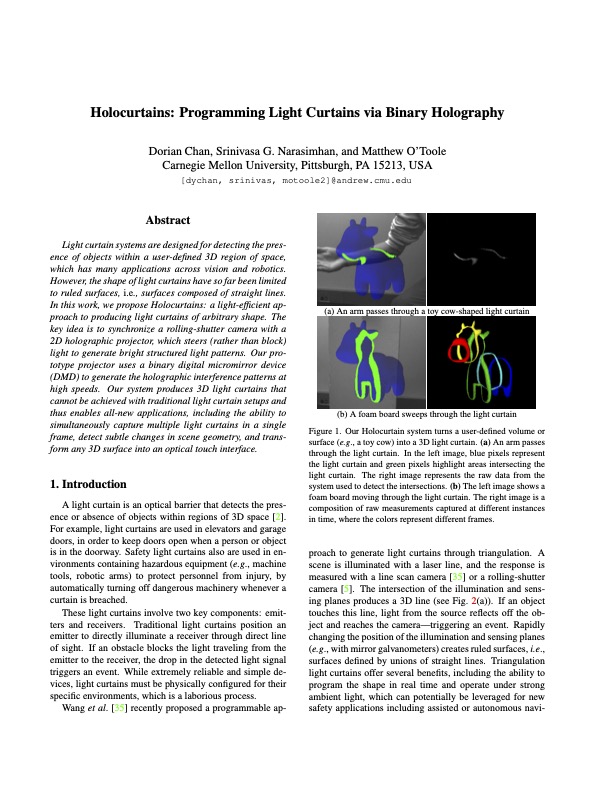Abstract
Light curtain systems are designed for detecting the presence of objects within a user-defined 3D region of space, which has many applications across vision and robotics. However, the shape of light curtains have so far been limited to ruled surfaces, i.e., surfaces composed of straight lines. In this work, we propose Holocurtains: a light-efficient approach to producing light curtains of arbitrary shape. The key idea is to synchronize a rolling-shutter camera with a 2D holographic projector, which steers (rather than block) light to generate bright structured light patterns. Our prototype projector uses a binary digital micromirror device (DMD) to generate the holographic interference patterns at high speeds. Our system produces 3D light curtains that cannot be achieved with traditional light curtain setups and thus enables all-new applications, including the ability to simultaneously capture multiple light curtains in a single frame, detect subtle changes in scene geometry, and transform any 3D surface into an optical touch interface.

Paper